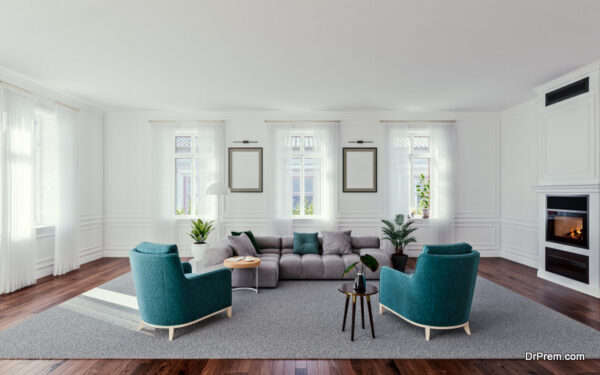When it comes to designing your living space, the colors you choose for your furniture can play a powerful role in shaping the atmosphere of your home. While you might not consciously think about it, something as simple as the color of your cabinet doors can have a significant impact on your mood, emotions, and overall sense of well-being. Here’s a deep dive into the fascinating world of color psychology in furniture design and discover how different hues can influence the ambiance of your living spaces.
The Tranquil Allure of Blue
Imagine sinking into a plush blue sofa after a long day – it’s an experience that can evoke feelings of calmness and relaxation. Blue is often associated with tranquility and serenity. It has the unique ability to lower blood pressure and slow down the heart rate, creating a soothing and peaceful environment. Incorporating blue furniture, such as chairs, couches, or even accent pieces, can transform a room into a serene oasis, making it an ideal choice for spaces where relaxation is a priority.
Cool colors like shades of blue not only create a soothing visual experience but can also have a physiological effect, helping to slow down your heart rate and create an oasis of calm in your living space. By understanding the psychology of cool colors, you can strategically use them to create havens of relaxation within your home.
Energizing Vibrancy of Red
On the other end of the spectrum, you find red – a color that exudes energy and passion. Red furniture pieces, such as dining chairs or decorative cabinets, can inject a burst of vibrancy into a room. Red is known to stimulate the appetite and encourage lively conversations, making it a perfect choice for areas where you gather with friends and family. However, a little goes a long way with red; incorporating it as an accent color can create a dynamic focal point without overwhelming the space.
Harmonious Balance with Green
Green, reminiscent of nature and growth, has a harmonizing effect that can bring a sense of balance to your home. Incorporating green furniture, like sofas or ottomans, can create a refreshing and calming ambiance. The presence of green shades can mimic the outdoors, fostering a sense of tranquility and renewal. Whether it’s a lush green sofa in the living room or a verdant accent chair by the window, these pieces can serve as gentle reminders of the beauty and serenity found in the great outdoors. Green furniture not only adds aesthetic appeal but also helps create a sanctuary where you can escape the stresses of modern life and immerse yourself in the calming embrace of nature.
Serenity and Neutrality of White and Gray
White and gray are often considered neutral colors, but they hold immense power in influencing the mood of a room. White reflects light, making spaces appear larger and more open. White furniture, like cabinets or tables, can create an airy and peaceful atmosphere, making it a staple in minimalist and contemporary designs. Gray, on the other hand, brings a sense of sophistication and balance. Whether it’s a gray sofa or a bedroom dresser, this color complements a wide range of styles, allowing other design elements to shine.
Inviting Warmth of Earth Tones
Earthy tones, such as browns and beiges, evoke a sense of warmth and comfort. These colors are associated with stability and grounding. Furniture pieces in earthy tones, like wooden tables and cabinet doors or leather couches, can create a cozy and inviting environment. They work well in spaces where you want to encourage relaxation and a sense of connection with nature. These hues can easily be paired with other colors to create a harmonious and inviting space.
Conclusion
As you embark on your journey to design your living spaces, remember that the colors you choose for your furniture go beyond aesthetics – they have the power to shape the way you feel in your home. Whether you opt for calming blues, energetic reds, harmonious greens, serene whites, and grays, or inviting earthy tones, each color brings its unique psychological impact. By understanding the psychology of color in furniture design, you can curate an atmosphere that aligns with your desired emotions and experiences.
Incorporating these insights into your furniture choices allows you to craft a space that not only looks beautiful but also feels just right. So, next time you’re deciding on the color palette for your furniture pieces, take a moment to consider the emotions you want to evoke and the atmosphere you want to create in each room of your home. Your furniture’s hues are like the silent storytellers of your living spaces, guiding the mood and energy of all who inhabit them.
Article Submitted By Community Writer




